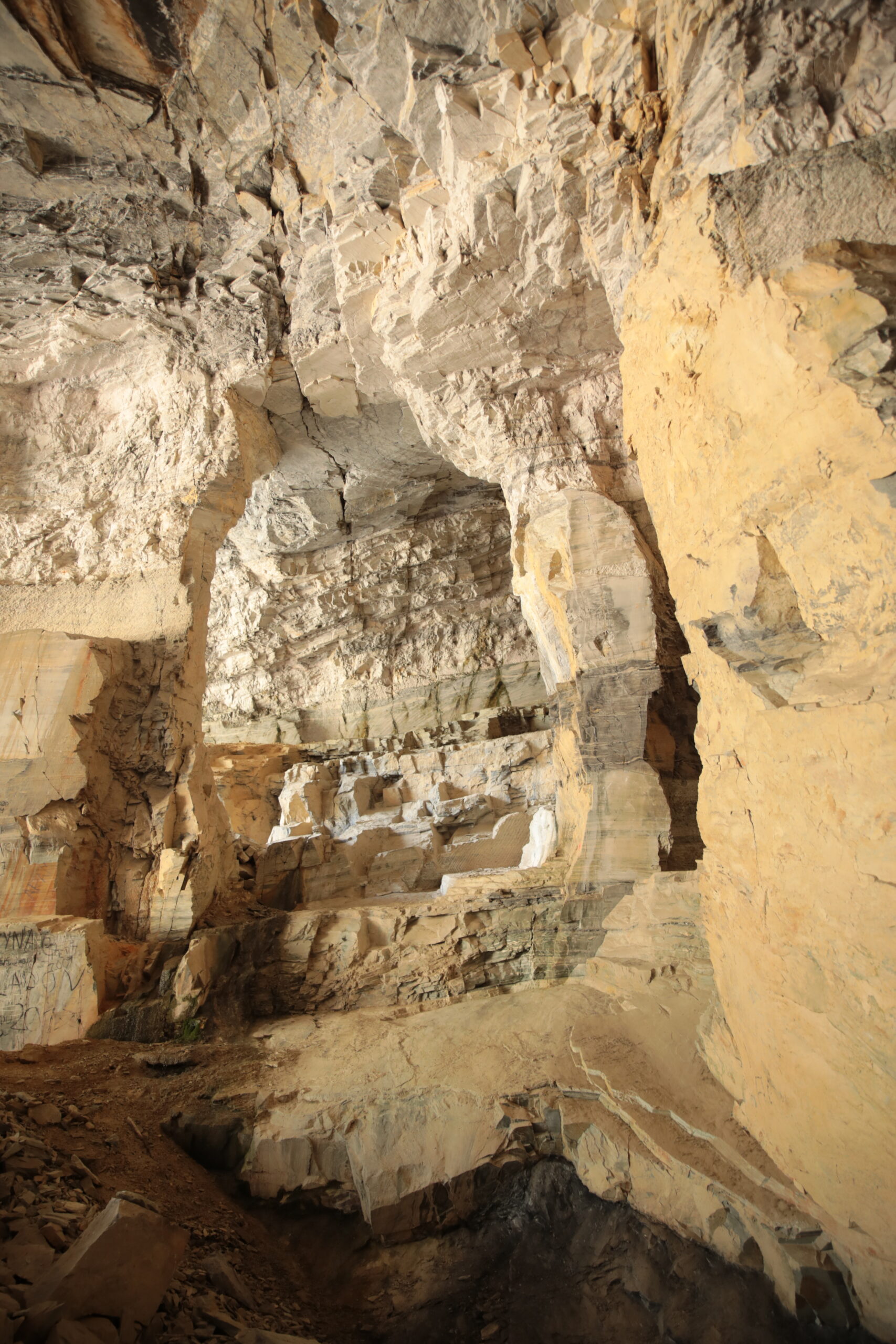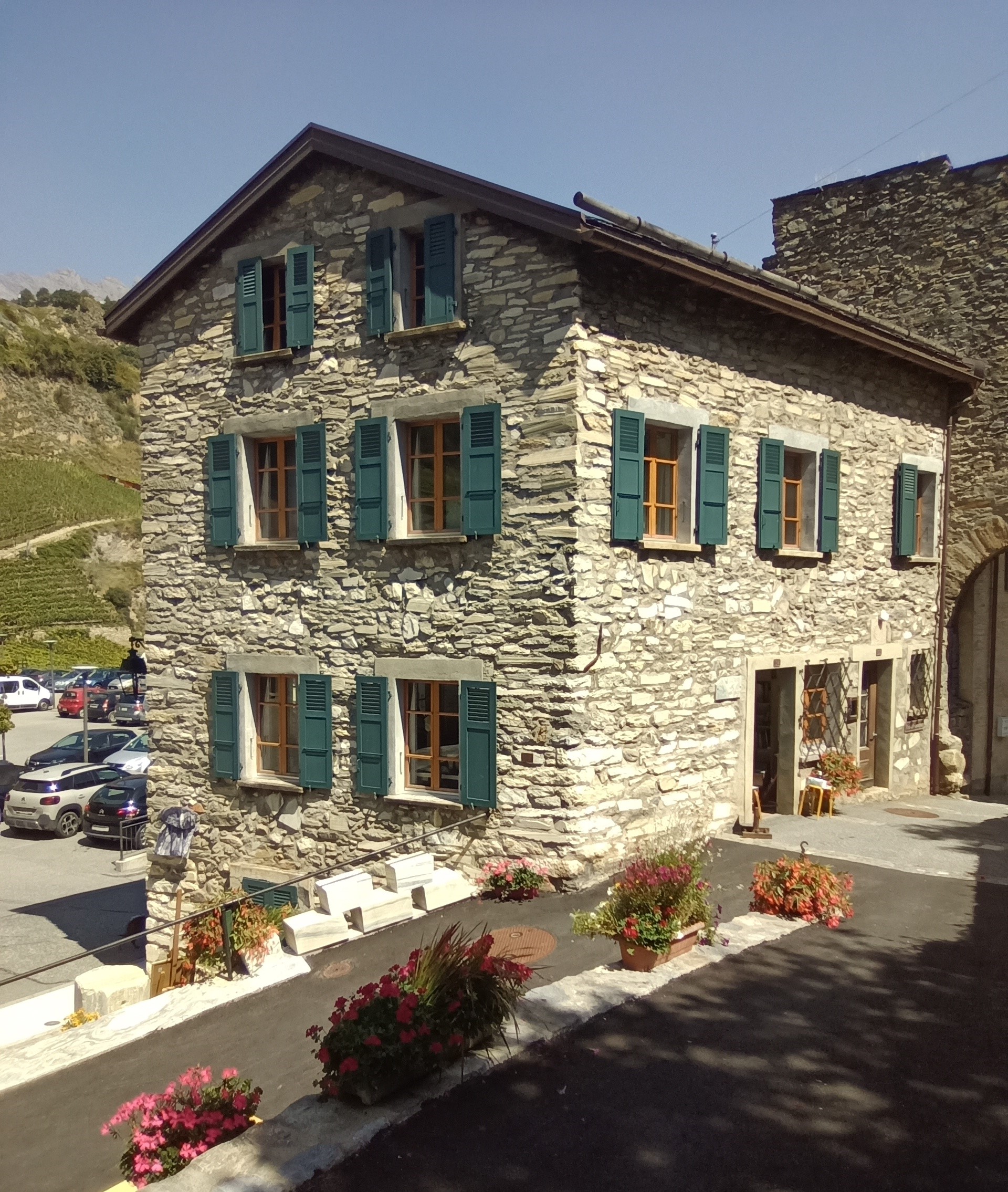Derived from the Italian “cipolla” meaning “onion”, Saillon’s cipolin marble has been worked by hand since the 19th century. The industrial exploitation of the Saillon quarry brought the village to international attention.
As early as 1832, white marble and blue marble (turquin) were extracted from the mountain. It was at the end of 1873 that the famous cipolin marble, ivory-coloured with green and violet veins, was discovered. Twenty-five Valais, Swiss and European companies successively exploited the Saillon quarry until 1930.
A funicular to transport the blocks of marble
With the quarry at an altitude of 1,000 metres, a funicular railway was installed in 1880 to transport the blocks across the plain to the hamlet of La Sarvaz. From the early 1960s until 1975, Lathion S.A. used a cable car to bring the marble down to a factory in Evionnaz, where it was used to make tiles.
From Saillon marble to the Garnier Opera House in Paris
Saillon marble is used worldwide. Numerous monuments in Switzerland, as well as in Europe and America, have been built using cipolin marble extracted from the Saillon quarries. The architect Charles Garnier, for example, chose this marble to create the bases of several sculptures erected in the walls of the Garnier opera house in Paris.


The Friends of Saillon Marble
Since 2017, the Association des amis du marbre (AAM) has had premises at rue Saint-Jacques 24, in the heart of the old medieval town. It houses a small library, items from the AAM’s collections or those deposited by artists, a selection of the different varieties of Saillon marble, and an assortment of tools once used by quarrymen.

